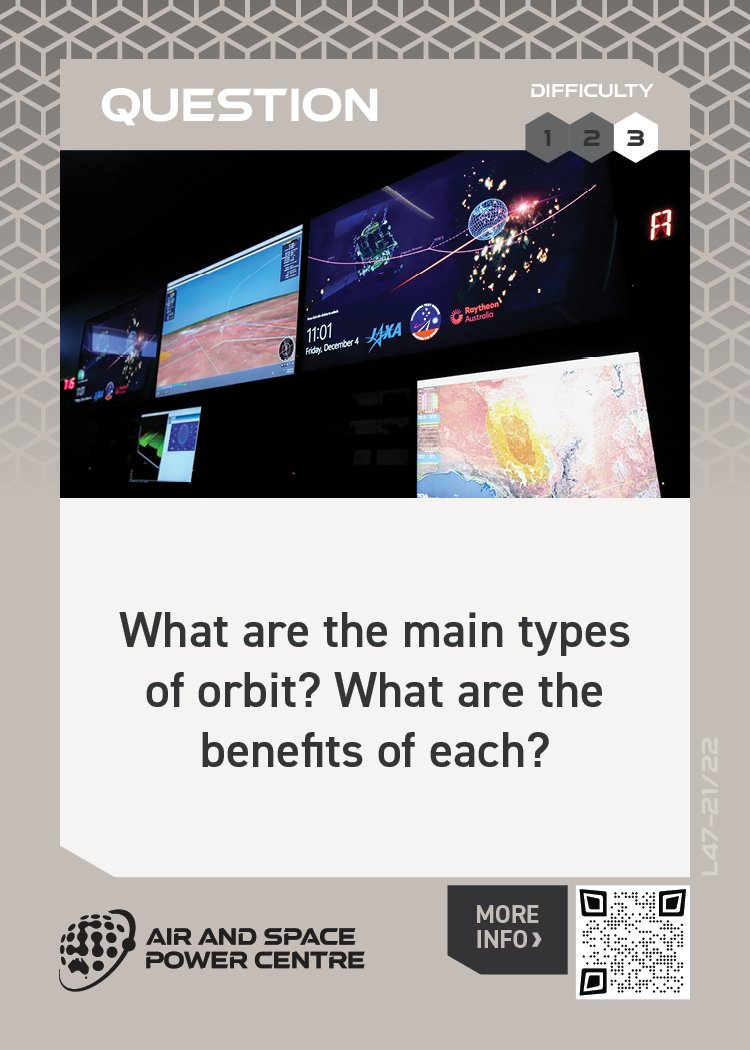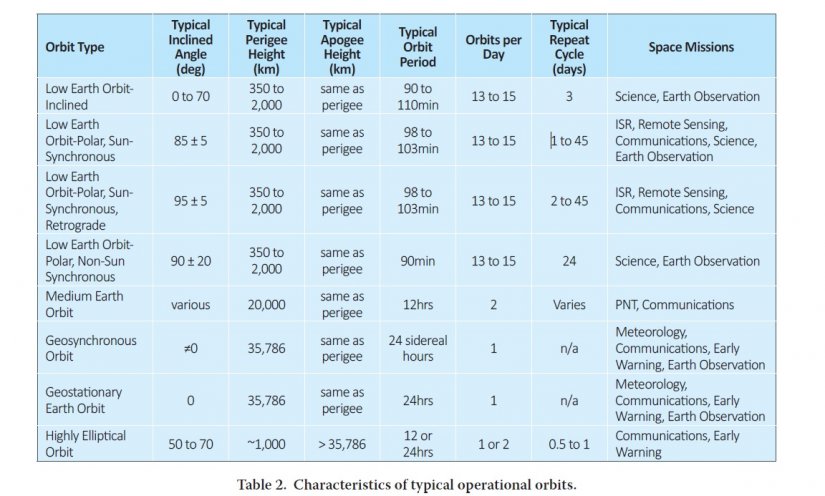
Overview
What are the main types of orbit? What are the benefits of each?
An orbiting spacecraft has its forward movement offset by the pull of the Earth’s gravity. Once in stable orbit, free from any significant drag, the spacecraft will remain in orbit unless acted upon by an unbalanced force, such as on-board thrusters or solar radiation pressure
Low-earth orbit (LEO): LEO orbits lie between 150 and 2000 km, but most commonly from 500 to 800 km, with an orbital period of about 90 minutes
Medium-earth orbit (MEO). MEO orbits lie between 2000 km to 35,786 km, but most commonly at 20,200 km or 20,650, with an orbital period of 12 hours. Note that the Van Allen Belts of high energy protons lie within the MEO orbital ranges.
Geosynchronous orbit (GSO). The orbital period of a geostationary orbit coincides with the direction and period of rotation of the Earth. The spacecraft will appear to the observer always in the same area of the sky. However, it may appear to be ascending and descending in altitude about an average point in the sky due to the orbit’s inclination 11 angle and eccentricity . The GSO is used to enable stacking of spacecraft situated above and below geostationary spacecraft, and relieve orbital congestion.
Geostationary-earth orbit (GEO). At an altitude of 35,786 km, GEO is a special case of geosynchronous orbit. GEO describes a circular orbit whereby the satellite remains over the Earth’s equator, ie its inclination and eccentricity are zero. In this orbit, the satellite has the same angular velocity as the Earth, and a period of 24 sidereal hours.
Parking or transfer orbit. This describes a temporary orbit used during the launch phase of a spacecraft. A booster rocket enters the 1 Eccentricity refers to the shape of the orbit. A satellite with a low eccentricity orbit moves in a near circle around the Earth. An eccentric orbit is elliptical, with the satellite’s distance from Earth changing depending on where it is in its orbit. https://earthobservatory.nasa.gov/Features/OrbitsCatalog 2 A sidereal day measures the rotation of Earth relative to the stars rather than the sun. It helps astronomers keep time and know where to point their telescopes without worrying about where Earth is in its orbit. https://earthsky.org/astronomy-essentials/what-is-sidereal-time 12 parking orbit with the payload, and is stabilised to conduct systems testing and activation checks before firing again to enter the final desired trajectory by which the payload is placed into the final desired orbit.
Highly Elliptical Orbit (HEO). HEO is an elliptical orbit with a low perigee altitude (within LEO) and a high apogee (outside GEO). These orbits have an inclination between 50 and 70 degrees and high eccentricities, like the Russian Molniya orbit. A Molniya is a semisynchronous orbit, ie an orbital period of 12 hours, at the critical inclination of 63.5 degrees. HEO is popular for the Earth’s magnetospheric measurements, astronomical observatories, and communications in high northern latitudes.
Lagrange Point Orbits (LPO). A Lagrange Point is a location in space around a rotating two-body system (such as the Earth-Moon or Earth-Sun) where the pulls of the gravitating bodies combine to form a point at which a third body of negligible mass, for example a spacecraft, would be stationary relative to the two bodies. Growing numbers of spacecraft are being placed in LPO orbits between the Sun-Earth and the Earth-Moon.
